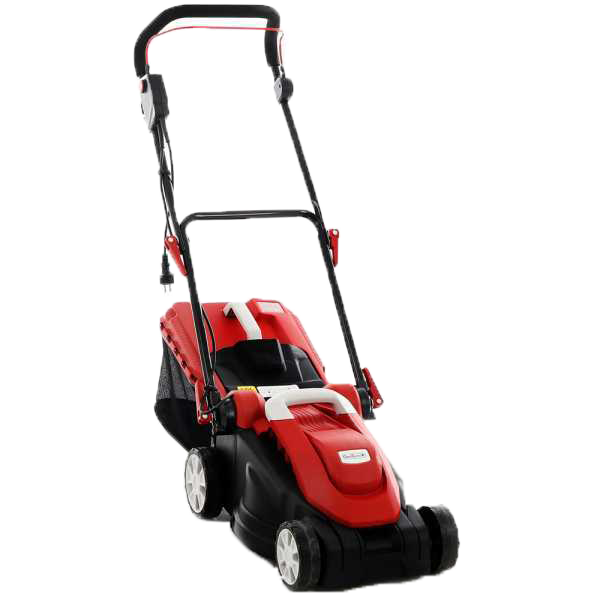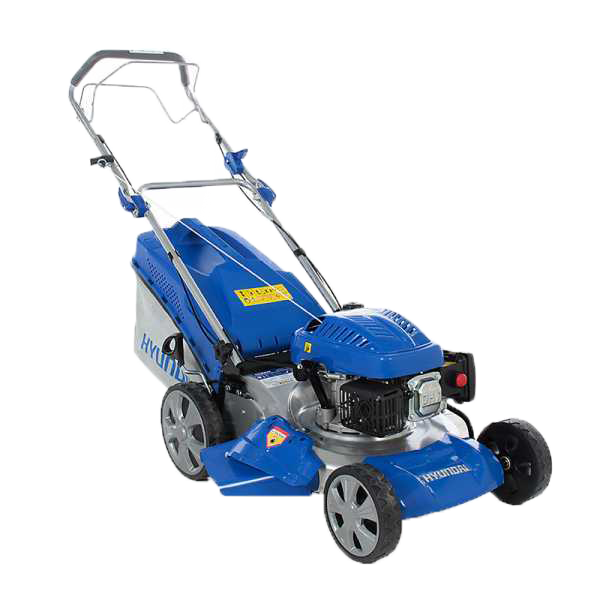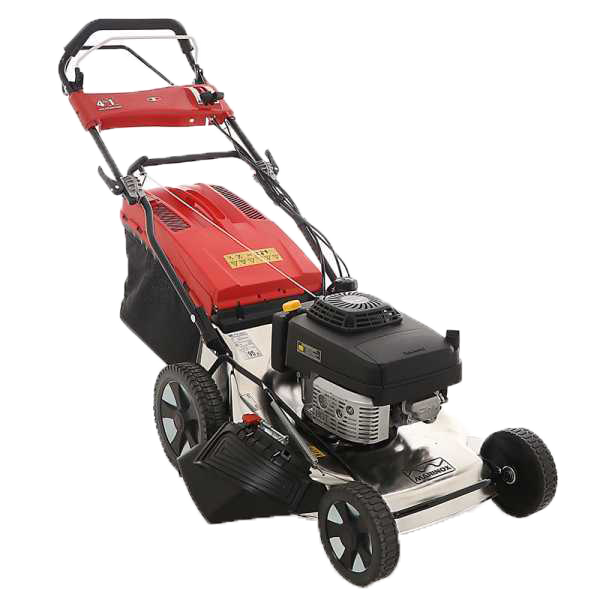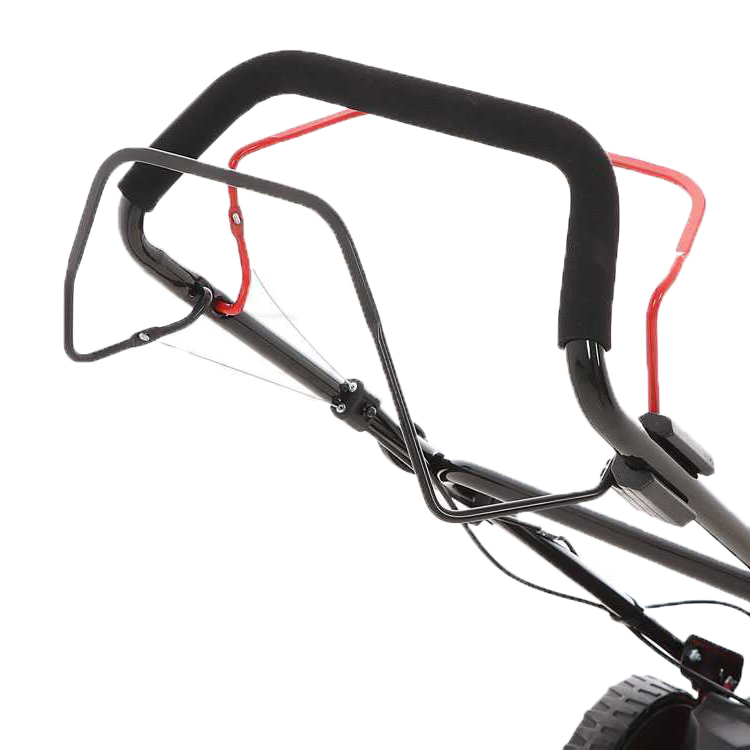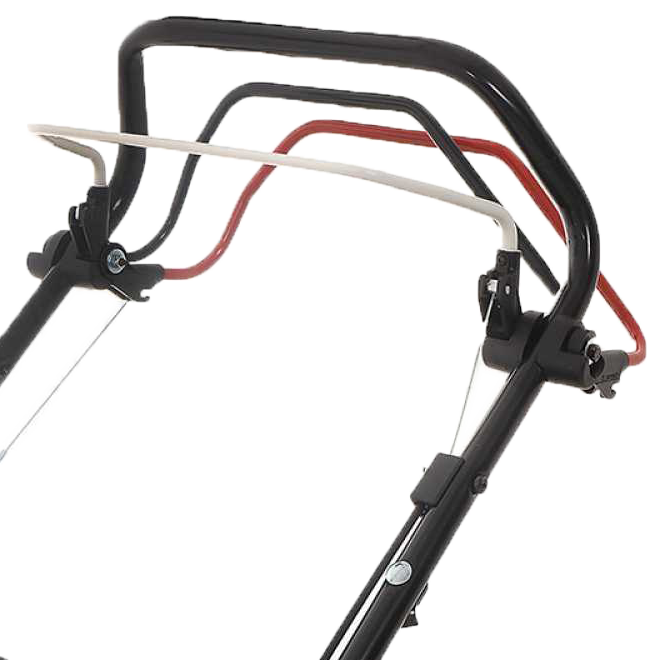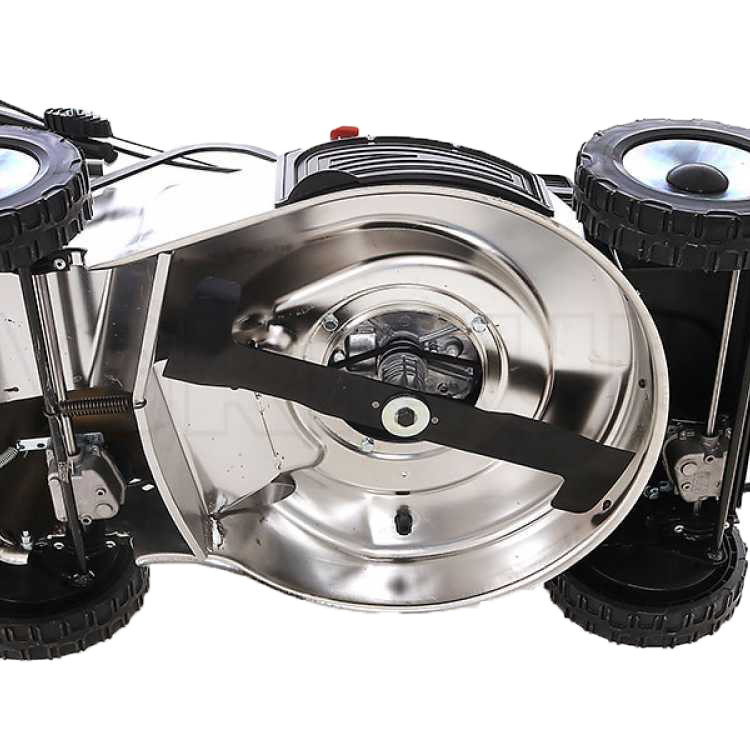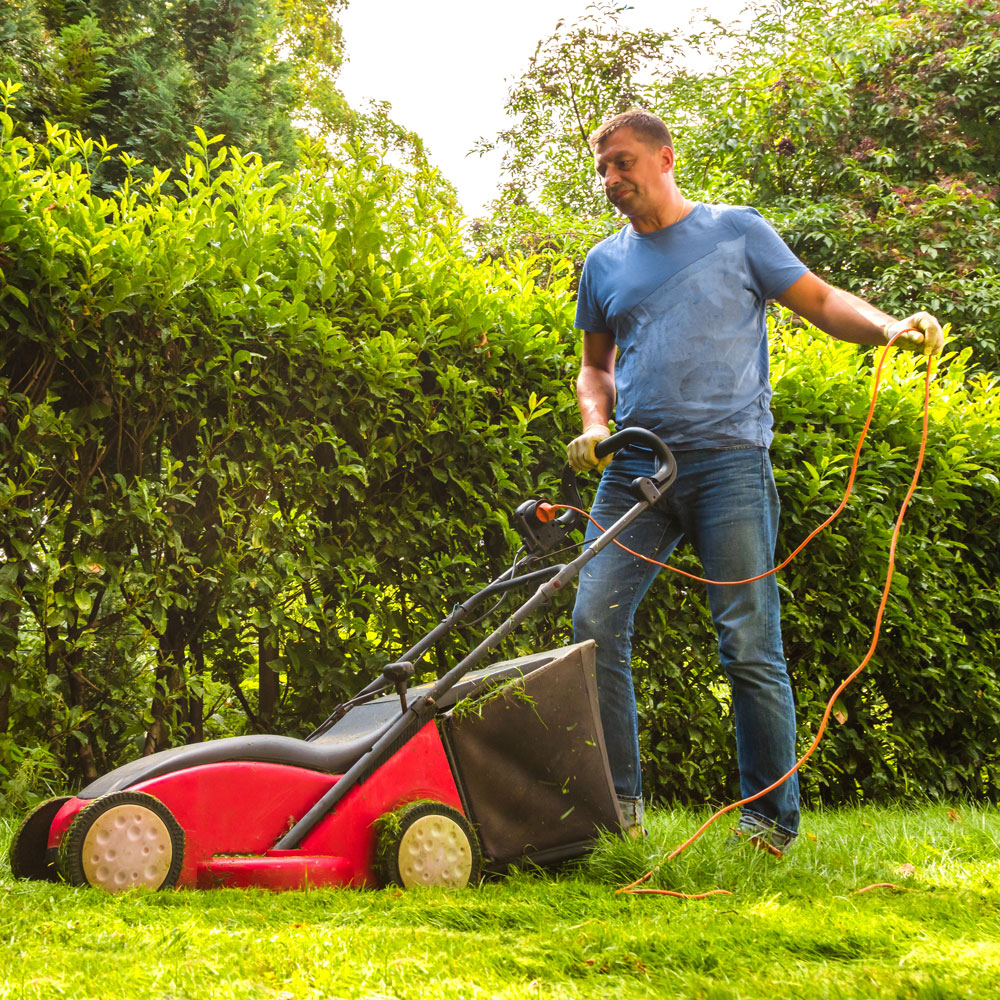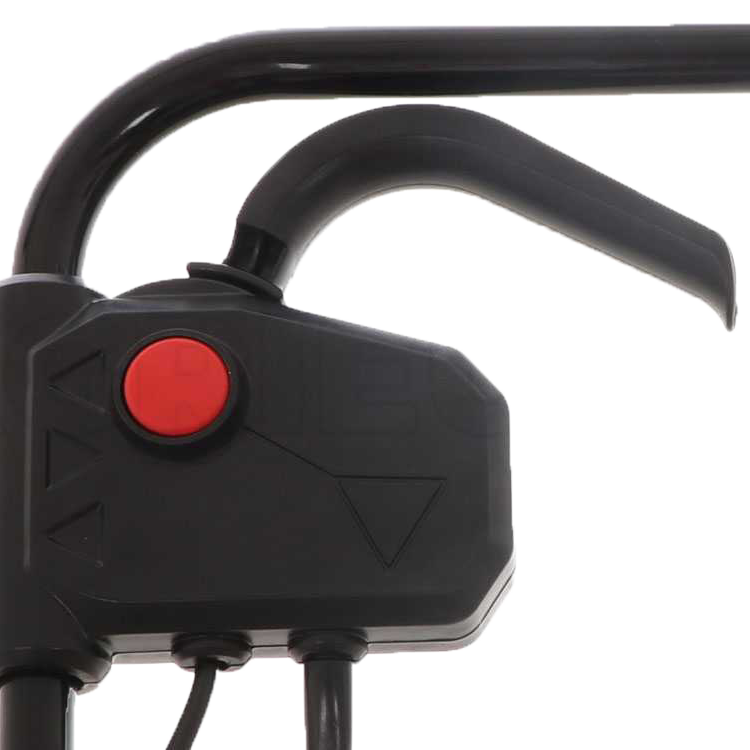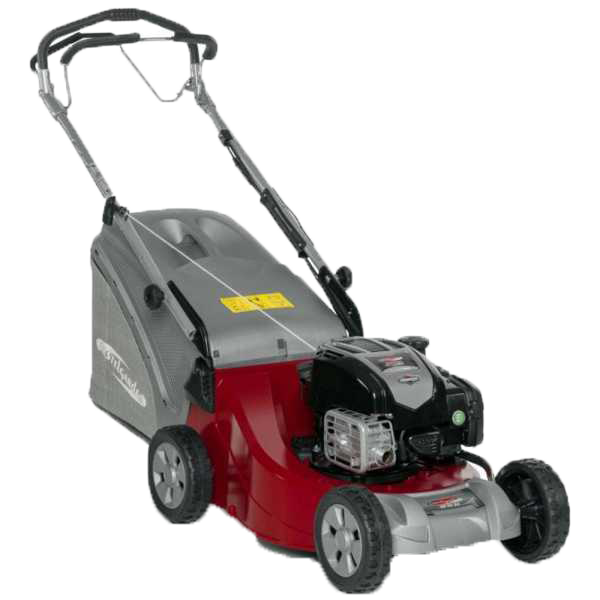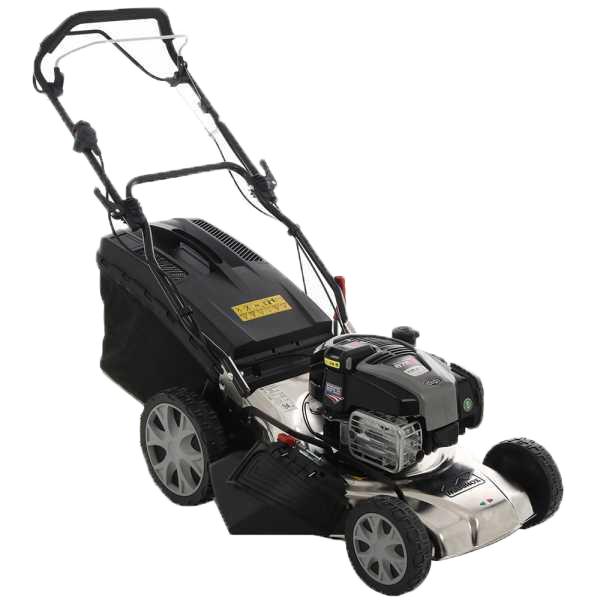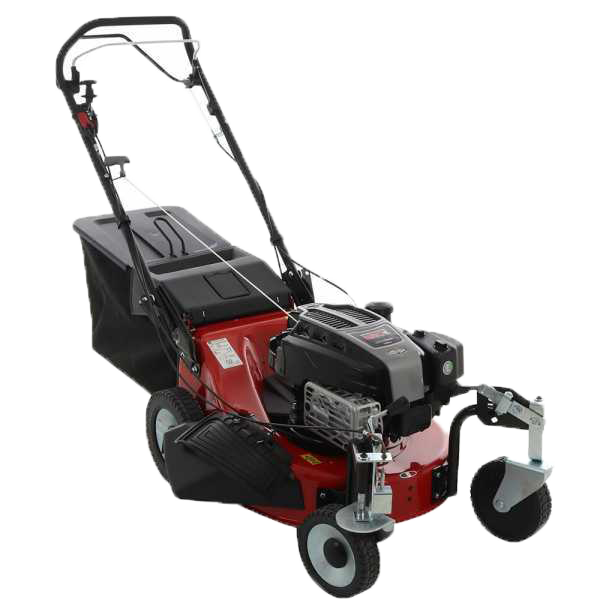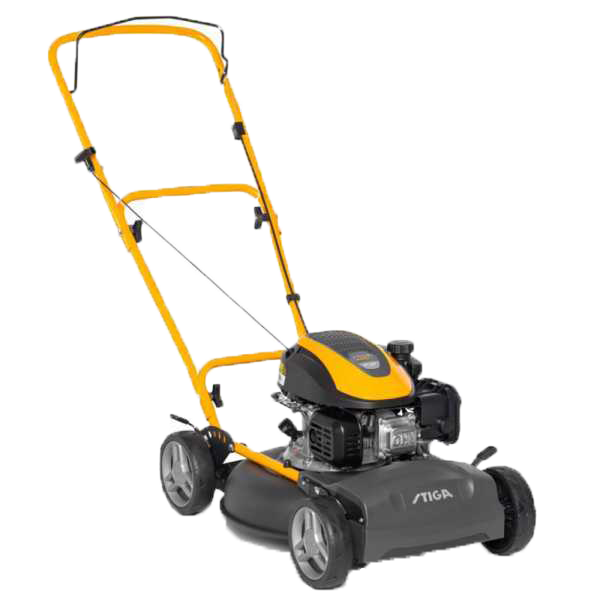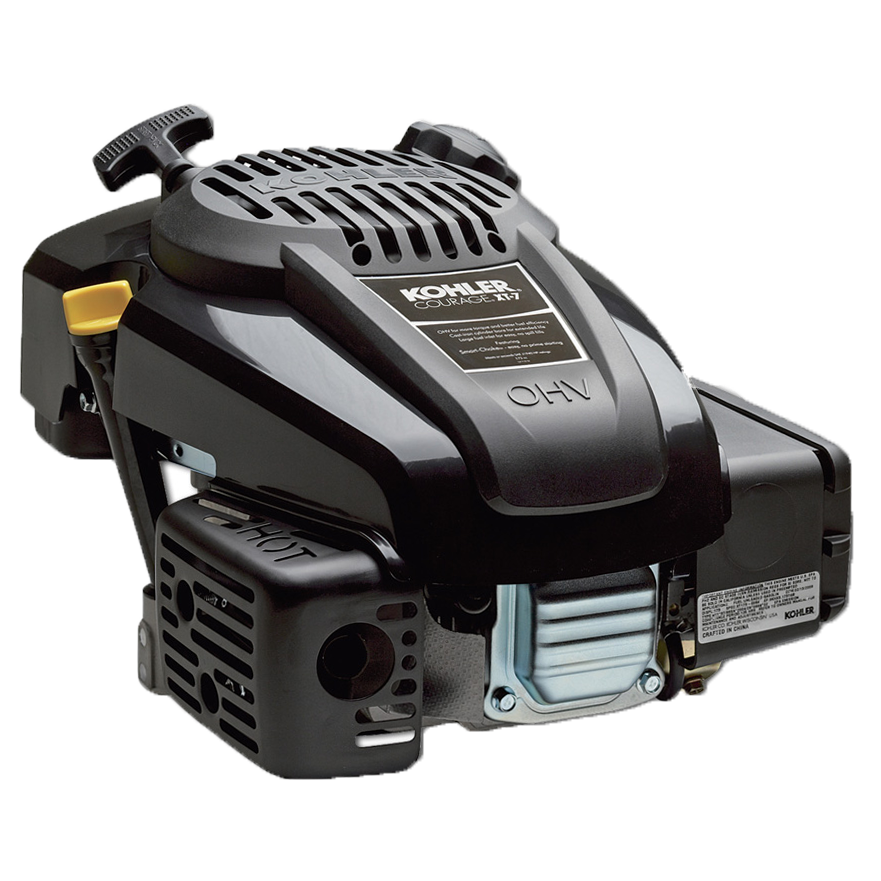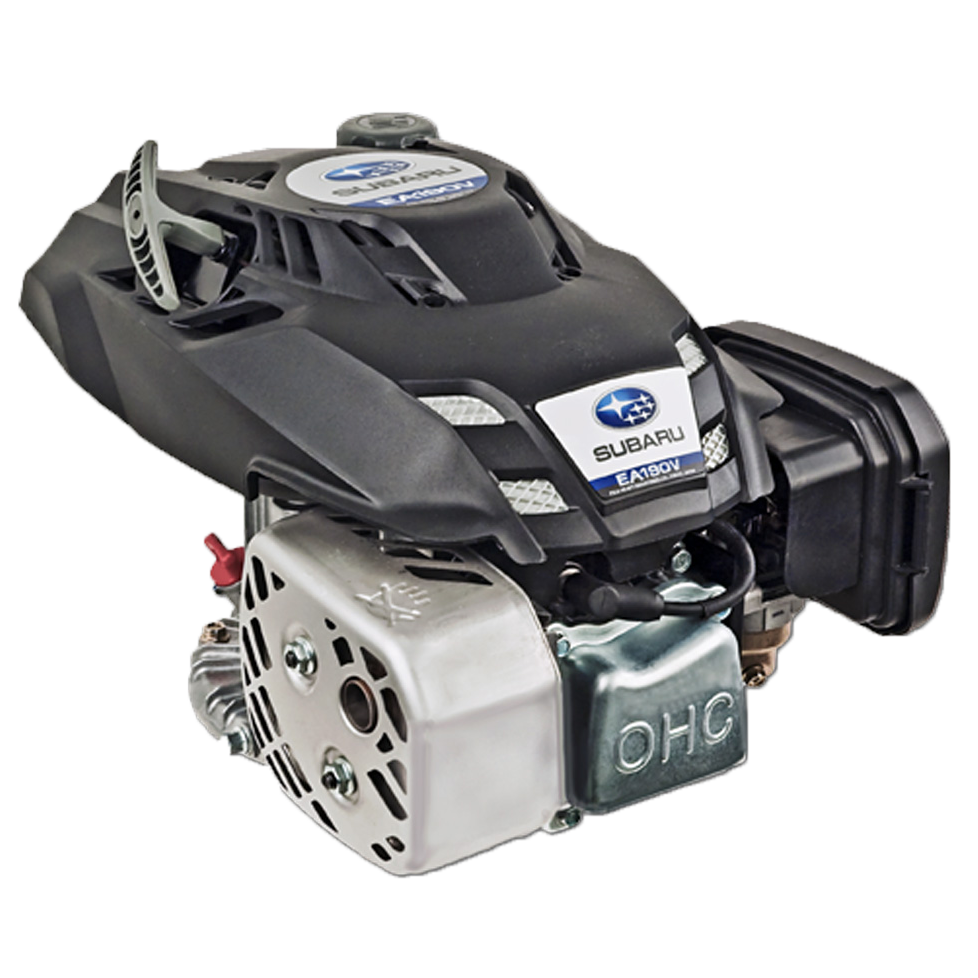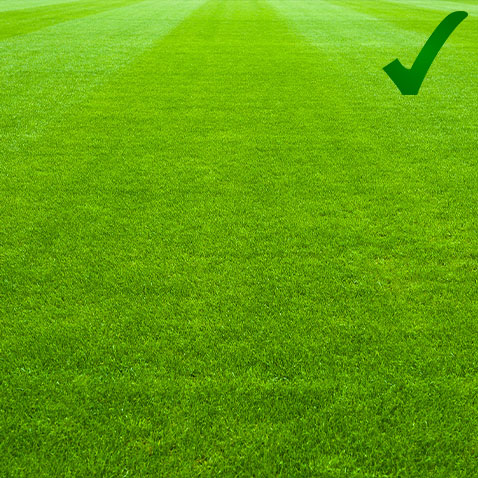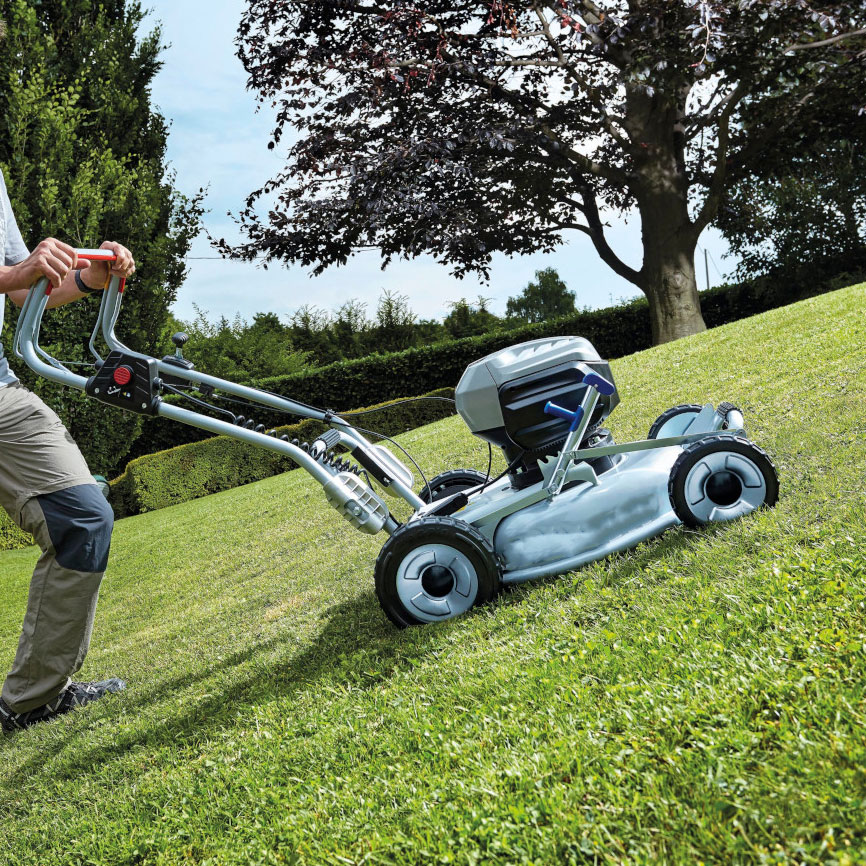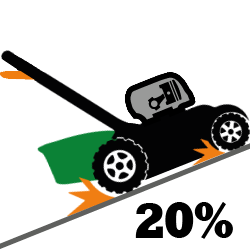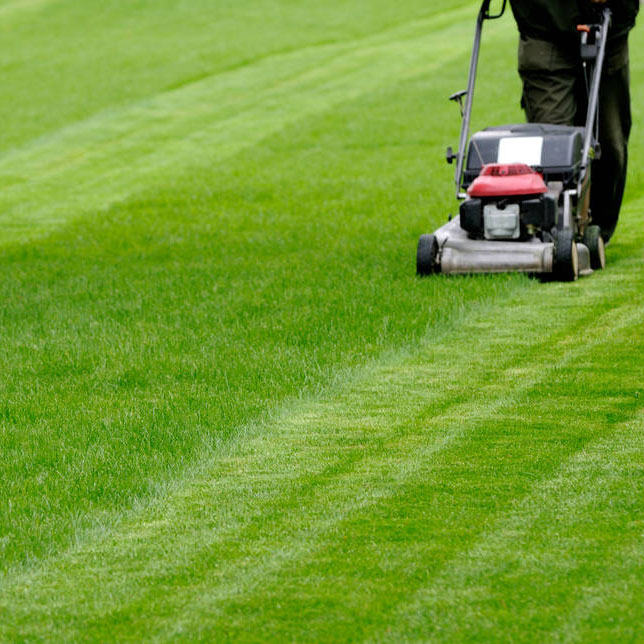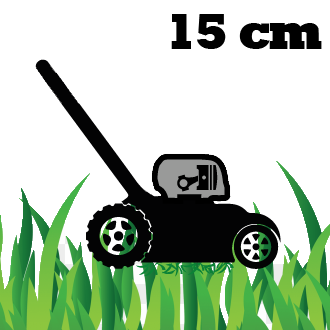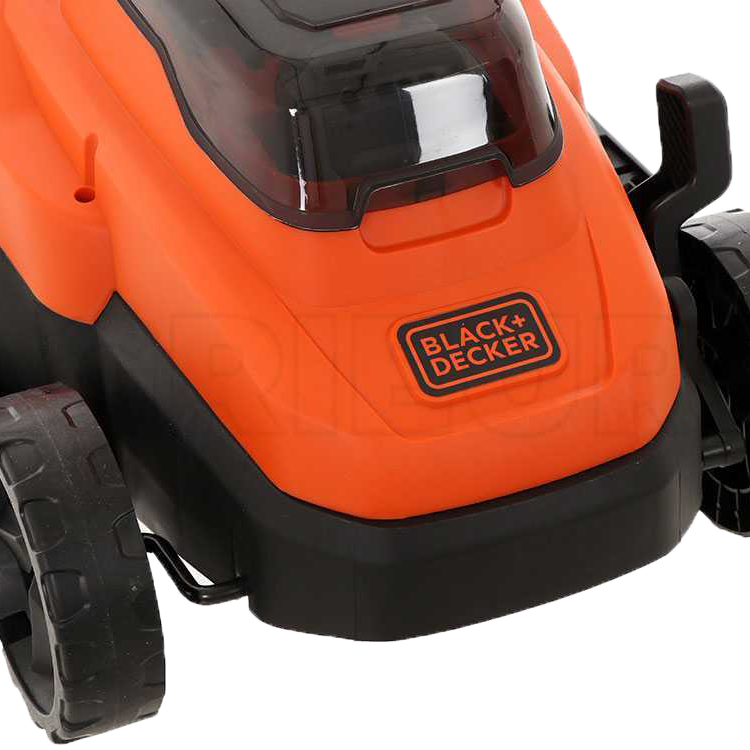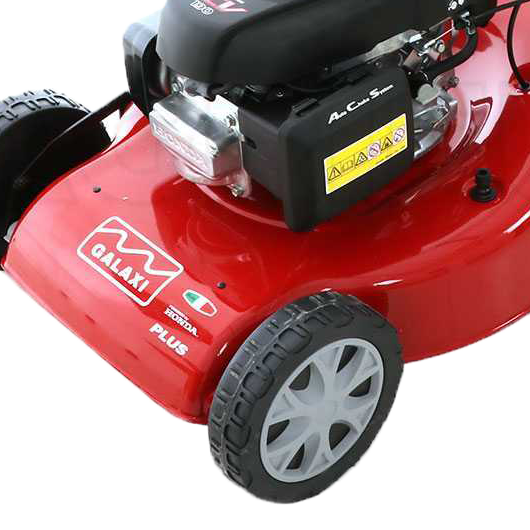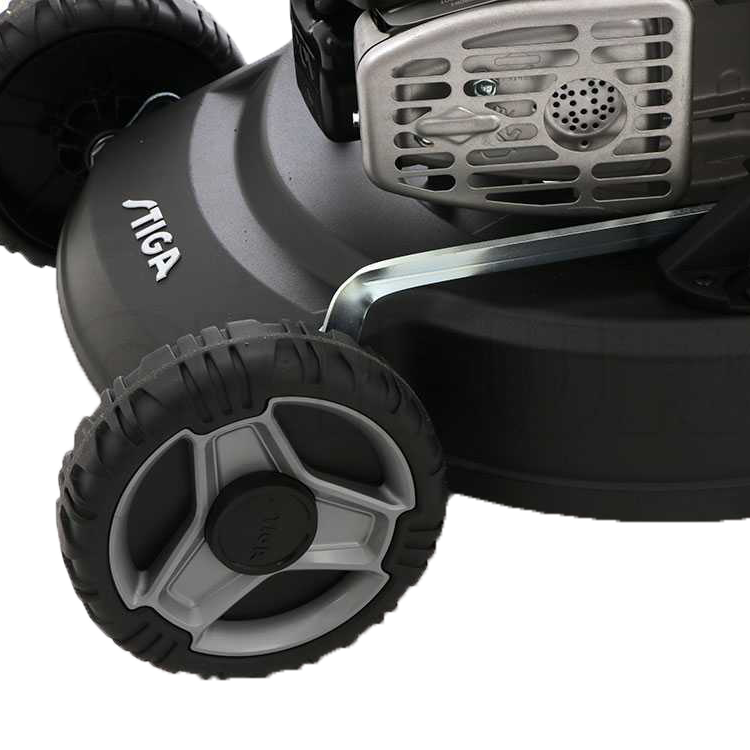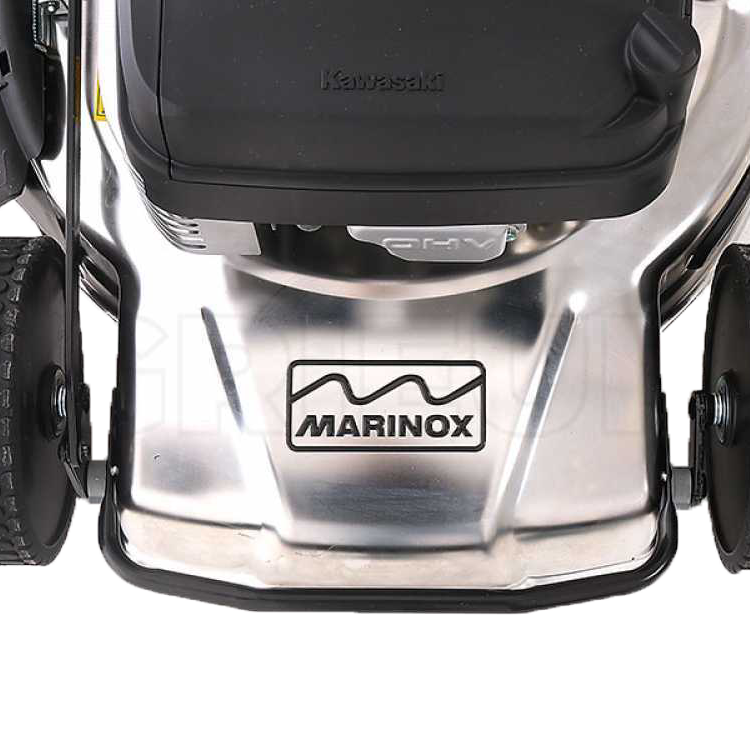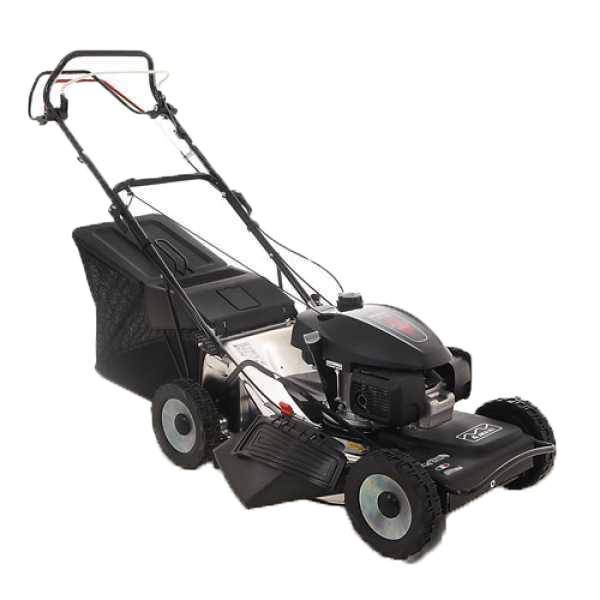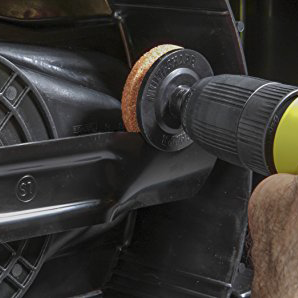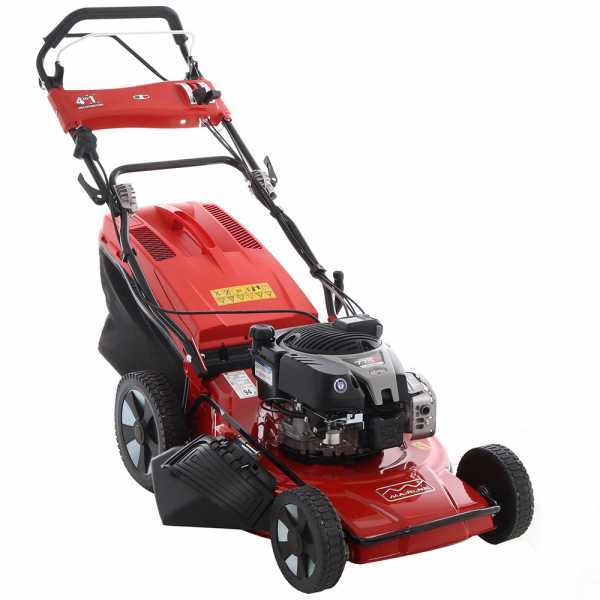A comprehensive guide to purchasing the best lawn mower, with many useful tips on use and maintenance.
The Complete Guide to help you choose the Best Lawn Mower – Lawn Cutter
by the Real Experts of Gardening Equipment
If you are interested in purchasing a lawn mower, then this article may be just what you need. A lawn mower, although very easy to use, is a fairly complex piece of machinery both because of the different versions that exist and because there are many aspects to consider in order to identify the best model for your needs. What is the most suitable model for the job? Is it better to have an electric or a petrol lawn mower for the lawn? Hand-push or self-propelled? Which cutting width to choose? What is the best motor or engine and the right power? Should we choose a lawn mower with grass collector, side discharge or mulching cutting system?
As you can see, there are many questions to be asked, as well as the needs of each consumer, and the models that may be the right solution to meet them.
CONTENTS
1. Size of the lawn
The different models of lawn mowers are able to cut from the smallest lawns up to an area of 3000 sq m. As the size of the lawn increases, it is a good idea to use lawn mowers with a larger cutting deck and therefore a larger cutting width.
It should be borne in mind that the greater the size of the lawn to be tended, the greater the effort required by the operator.

Suffice it to say that for about 1000 sq m of lawn, it takes about 2 to 3 km to mow it properly.
That is the reason why it is good idea to move towards lawn mowers that can cut lawns of similar or equal size to your own. And this feature is obviously related to other functionalities of the machine:
- Cutting width
- Self-propelled equipment
- Engine/Motor power
- Cutting system
Self-propelled lawn mowers can be a very useful alternative if the working area is large. The type of cutting system depends not only to size but also on the type of grass to be mowed and how often you want to cut it. For example, the side discharge is suitable for cutting tall and thick grass and for lawns that are not frequently tended. However, let us take one step at a time and see all the characteristics to be considered in a logical order, from the most general to the most specific.
1.1 The cutting width
Today, larger and more powerful mowers are available on the market. Just consider that an heavy-duty lawn mower can reach a cutting width of up to 58 cm. In general, lawn mowers are conventionally divided according to the CUTTING WIDTH:
| 30/35 cm cutting width | Very small lawn mowers | Up to 150 sq m |
| 35/40 cm cutting width | Small lawn mowers | 150/300 sq m |
| 40/45 cm cutting width | Medium-small lawn mowers | 300/600 sq m |
| 45/50 cm cutting width | Medium lawn mowers | 600/1200 sq m |
| 50/55 cm cutting width | Large lawn mowers | 1200/1800 sq m |
| 55/60 cm cutting width | Very large lawn mowers | 1800/2600 sq m |

(30-35) 
(35-40) 
(40-45) 
(45-50) 
(50-55) 
(55-60)
*NOTE: starting from lawn mowers with 40 cm of cutting width upwards (from No. 3 of the above list), some models can be equipped with traction; if present, the extension can be taken into account by rounding up a little, if not present, round down. We would also like to point out that from 50 cm of cutting width upwards, all lawn mowers on the market are self-propelled as a standard feature. However, we refer to a later section for an analysis of the traction equipment.
If, however, you have a lawn that extends further than these figures, then it would be a good idea to take into consideration the purchase of a riding-on mower. Actually, it is not necessary to have more than 2500 square metres of cutting surface to consider purchasing a riding-on mower: in fact, today many users are already choosing one of these machines even if they have only 1000 square metres of lawn to mow, both because today it is possible to find very small riding-on mowers (known as “rider riding-on mowers“, which perform slightly better than a large lawn mower), at a very affordable price (even just over 1000 euros), and because mowing even 1500 or 2000 square metres with a normal lawn mower, even if it is a large, heavy-duty machine, is a long and difficult operation that takes a few hours.

Rider riding-on mower 
Riding-on mower with grass collector
As far as lawn mowers are concerned, as the cutting width increases, the time required for cutting operations and operator workload will generally decrease.
2. Hand-push or self-propelled?
2.1 Hand-push lawn mowers
The hand-push lawn mower clearly requires a greater effort by virtue of the thrust needed from the operator during its use. However it is mainly suitable for:
- small areas of lawn
- gardens with many obstacles (e.g. trees, bushes, flower beds, poles, stones, benches, vases, etc …) that would make self-propelled wheels of little use

Small garden 
Garden with obstacles
2.2 Self-propelled lawn mowers
The self-propelled lawn mower is instead recommended for:
- Medium/large lawns (from 300/400 sq m upwards)
- gardens without too many obstacles and winding passages, as the self-propelled machine, given its average speed, is recommended to be engaged in straight and long stretches, thus exploiting its potential and relative comfort.

However, it is worth remembering that a self-propelled lawn mower also functions as a hand-push model, which means that in non-straight stretches or with obstacles, it is sufficient not to pull the self-propelled engagement lever and the lawn mower simply works by pushing.
2.3 Types of traction and gearbox
As we have already said, self-propulsion is an extremely important aid for the operator to reduce fatigue, especially on large surfaces and without obstacles, as the user’s contribution is limited to simply manoeuvring the product and walking behind it
Let us take a look at all the traction types on the market:
- rear-wheel drive (the classic type, present on 95% of lawn mowers)
- front-wheel drive
- rear-wheel drive + speed variator
- rear-wheel drive + gearbox with gears
- 4WD drive (or 4×4 four-wheel drive)
Rear wheel-drive: all lawn mowers on the market with the traditional self-propelled drive have a medium-high speed, designed by all manufacturers to speed up lawn mowing and reduce fatigue. Which is why it is normally recommended for fairly unobstructed surfaces (it is sufficient not to pull the self-propelled engagement lever and it turns into a hand-push lawn mower).

Self-propelled engagement lever 
Traction gearbox
Front-wheel drive : these are the “American-style” models, which are not very common in Europe, but the self-propelled equipment is similar and it has both pros and cons:
- PRO: allows to make turns and manoeuvres, even sharp ones, without disengaging traction, by lowering the handle and raising the front wheels (e.g. at the end of a straight line to turn around)
- CONS: has less traction than conventional rear-wheel drive, as the centre of gravity of the lawn mower’s weight is shifted towards the rear wheels, especially when the rear grass collector tends to fill up. Therefore if there are slopes, even gentle ones, this type of traction is not recommended.
Rear-wheel drive + speed variator: the latter is an additional feature that provides a range of speeds that increases versatility compared to normal traction (which has a fixed medium-high speed); a lower or higher speed can be activated on the basis of:
- grass height (short or tall)
- the greater or lesser presence of obstacles around which the operator has to go (low speed).

Self-propelled engagement lever 
Gearbox with variable speed pulley that determines speed variation
Rear-wheel drive + gearbox with gears: is of a much more professional level than the speed variator (which is a pulley with a variable speed opening mechanism) and is therefore fitted to higher-end models. It is a proper gearbox in oil bath, with superior sturdiness and durability (at least most of the time, depending on the brand), as well as much more higher cost.

Numbered gear levers 
Traction gearbox
4WD (or 4×4 four-wheel drive): it can belong to a professional range or not, according to the brand or model to which it is fitted. However, it can work up to a maximum gradient of 20% (as opposed to the 10%/15% of rear-wheel drive models); nevertheless, it is not recommended for slopes beyond that threshold, not so much for traction as for proper lubrication of the 4-stroke engines fitted beyond that level.

Double drive lever 
Two drive units (front and rear) – Marina Systems lawn mower
3. 2/4-stroke, electric or battery operated?
Below is a table listing the main properties of each of the three power supplies:
| Electric | Battery | 2/4-stroke | |
| Very Small, Cutting width 30/35 | x | ||
| Small, Cutting width 35/40 | x | x | x |
| Medium-Small, Cutting width 40/45 | x | x | x |
| Medium, Cutting width 45/50 | x | x | |
| Large, Cutting width 50/55 | x | x | |
| Very Large, Cutting width 55/60 | x | ||
| Hand-push | x | x | x |
| Self-propelled | x | x | |
| Speed variator, Gearbox, or 4WD | x | ||
| Top of the range Max quality | Hobby | Semi-professional | Professional |
| Maintenance required | Low | Medium | High |
| Average cost/ performance | Low | High | Medium |
3.1 Electric lawn mowers
It is the smallest type compared to the battery-powered and 2/4-stroke models and it can reach three maximum sizes (from a minimum of 30 cm to a maximum blade width of 46 cm). The electric lawn mower is mainly suitable for smaller gardens because in order to be operated, it must be connected with an extension cable to a 230V household power socket, which means that the machine can only be used in the close proximity of a house with no possibility of moving further away. Other than that, constant care must be taken to ensure that the power cable does not get under the lawn mower blades.

Electric lawn mower with power cable 
Handlebar-mounted control unit lever + button
For these reasons, the models that can be found on the market feature:
- A structural simplicity and an essential design without too many additional equipment;
- Small or medium-small cutting widths;
- A much more affordable cost (lower than battery-powered or 2/4-stroke models);
- A reduced weight and an ease of operation (with the exception of the inconvenience of the power cable);
- No maintenance requirements (except for the sharpening of the blade, which is rare given the small size of the lawn);
In conclusion, under what circumstances should you buy an electric lawn mower?
The purchase of an electric lawn mower may be the ideal solution when you need a small, affordable machine to use around the house with a conveniently located power outlet.
If you are interested in purchasing an electric lawn mower or would like to know more about it, we suggest you read our purchasing guide to electric lawn mowers.
3.2 Battery-powered lawn mowers

Medium-small battery-powered lawn mower 
Self-propelled battery-powered lawn mower
Battery-powered lawnmowers can combine convenience, efficiency and mowing speed. There are two main types of battery:
- Lead acid battery (outdated)
- Lithium battery (more modern technology to be preferred)
Electric motors powered by lithium-ion batteries are taking up a large share of the market. The rechargeable lithium battery is a very practical and convenient solution. Like all electric mowers, these models are particularly popular with those who value absolute comfort and for the following reasons:
- Advantages over 2/4-stroke lawn mowers:
- they do not require the same maintenance (oil check and change, air filter cleaning, spark plug replacement, etc.)
- they do not require the purchase of fuel to be kept available
- they do not require an elaborate cold start procedure
- Advantages over electric lawn mowers: they do not need to be connected to the mains, eliminating the discomfort of a power cable, and they can therefore work anywhere, even where there is no electricity.
To be sure of making a good purchase, it is wise to check the power and working autonomy. These two characteristics are both the result of two specific technical data which are among the first elements to be assessed on a battery-powered lawn mower:
- Voltage: does not properly express the power of the motor, but it is related to it (main voltages: 18V, 24V, 36V, 40V, 68V, 60V, 80V, 120V)
- Amperage: again, it does not properly express the power of the motor, but it is related to it (it generally ranges from 2 Ah up to max. 6 Ah).
In any case, if you have a fairly small garden, you can opt for a battery-powered lawn mower with limited voltage and amperage, while for larger gardens it is more advisable not to overlook these technical data. The reason for this is that today there are battery-powered lawn mowers not only designed for small gardens, but also for very large gardens, even up to 1500 sq m, with a cutting width of up to 53 cm (similar to a large 2/4-stroke lawn mower).
IN SHORT:
- Cutting widths ranging from 30 cm up to 53 cm
- Suitability for working on gardens of all sizes up to 1500 sq m (unlike regular electric lawn mowers equipped with power cable which are used on small gardens only)
- There are also many self-propelled versions with cutting widths starting from 46 cm up (for lawns of at least 400 sq m)
- No maintenance requirements
- Highest level of comfort ever compared to electric and 2/4-stroke models
- Much higher costs than electric lawn mowers, and also higher than 2/4-stroke ones (with the same product level and cutting width)
If you are considering the purchase of a battery-powered lawn mower or are looking for more information on it, we suggest you read the specific purchasing guide about battery-powered lawn mowers
3.3 2/4-stroke lawn mowers
The 2/4-stroke engine generally brings a lawn mower to a higher power level on average in comparison to electric models. However, there are 2/4-stroke lawn mowers of all sizes, from small hand-push models with 40 cm cutting width (suitable for 200 sq m of lawn), up to heavy-duty machines with a cutting width of 55 cm and more that are perfect for gardens of up to 2500 sq m. Here is a listing of the main classes on the market:
- hand-push – small (from 40 to 48 cm) powers: from 2.5 HP to 4.5 HP surfaces recommended: from 100 to 600 sq m
- self-propelled – medium (from 40 to 48 cm) powers: from 3.0 HP to 5.0 HP surfaces recommended: from 300 to 1200 sq m
- self-propelled – large (from 50 to 55 cm) powers: from 5.0 HP to 6.5 HP surfaces recommended: from 1000 to 2500 sq m

2/4-stroke small lawn mowers 
2/4-stroke medium lawn mowers 
2/4-stroke large lawn mowers
In addition to these three main classes, there are number of main variants offered for lawn mowers, all with high-level or professional equipment, including:
- 2/4-stroke lawn mowers with aluminium housing (these are heavy-duty level machines belonging to the class of large lawn mowers with a cutting width of 50-55 cm)
- 2/4-stroke lawn mowers with stainless steel housing (even more professional machines that are included in the class of large lawn mowers with a cutting width of 50-55 cm)
- lawn mowers with front swivelling wheel (or double wheel) (operated simply by means of a small lever)
- 2/4-stroke lawn mowers with mulching cutting system
- lawn mowers with electric start (for a maximum starting comfort, simply by turning the key)

Aluminium housing 
Stainless steel housing 
Lawn mower with front swivelling wheels 
2/4-stroke lawn mower with mulching cutting system 
2/4-stroke lawn mower with electric start
The presence of the 2/4-stroke engine also means a higher starting price for electric lawn mowers. This type of engine however allows on average longer service life and the possibility of covering larger surfaces.
THE ENGINE:
The choice of the engine is a matter of personal taste, also linked to one’s own experience, however it is important to note that renowned engine brands always stand for reliability, quality and high performance. More specifically, we are talking about engines built by:
- Honda
- Briggs&Stratton
- Kawasaki
- Kohler
- Subaru-Robin
- Loncin

Honda 
Briggs&Stratton 
Kawasaki 
Kohler 
Subaru-Robin 
Loncin
These ones represent the most established and acknowledged manufacturers of lawn mower engines on the market. All the engine brands not included in this list (of which there are hundreds more) are engines that European, American or Japanese manufacturers commission from Eastern manufacturers and then place their own trademark on them. This does not necessarily mean that the quality is not up to scratch, but in some cases a little more caution in the selection process would be justified.
A peculiarity in 2/4-stroke engines is the presence of the electric start. The 2/4-stroke engine can be conveniently started with a button or key directly from the dashboard (in these cases the battery is generally supplied as standard). 2/4-stroke lawn mowers with electric start provide maximum comfort even when starting the engine.

Instart engine with electric start and lithium battery 
Lithium battery 
Charger for lithium batteries
If you are planning to buy a 2/4-stroke lawn mower or are looking for more information about it, read our specific purchasing guide on 2/4-stroke lawn mowers.
4. When should I mow the lawn?
First of all, the lawn should be cut under the following conditions:
- Sunny days
- In the middle hours of the day
Why? The performance of the lawn mower would be the best possible due to the grass being less weighed down by moisture, which could result in more cutting effort for the blade, and a high probability of clogging under the shell of the machine and at the opening on the housing that allow grass collecting in the grass collector. If, on the other hand, the grass blades are dry, the cutting deck performs a much sharper cut with less effort, and in the case of mulching cutting system, the shredding process turns out to be much easier and less energy-consuming. It is precisely for this reason that it is recommended to mow the lawn in the middle hours of the day, because all the morning moisture that has soaked into the grass will have evaporated.
Conditions to be avoided are:
- Rainy days
- Overcast days (the grass dries out less from moisture anyway)
5. Lawn conditions
Soil levelling
First of all, it is necessary to make sure that the surface is well tended and levelled (no holes or unevenness in the ground), and strictly free of stones (as these can be harmful to the sharpening of the blade and can damage the hub holding the blade).

Levelled lawn 
Irregular lawn 
Lawn with stones
Slopes
This is always a very debated topic, because many users have a garden on a slope or with some steeply sloping sections and have doubts as to whether the lawn mower is suitable for working on a slope or not.

Lawn mower on sloping lawn 
Degree of slope
First of all it should be noted that, unless the slope is gentle, it would be better to avoid a hand-push model because it would be too tiring to push uphill.
It is therefore necessary to opt for a self-propelled lawn mower, which normally allows to work on slopes up to 10%. As for heavy-duty self-propelled lawn mowers, some models can be capable of working up to a maximum of 15 % of slope, provided they are fitted with rear-wheel drive and a suitable tread width for good traction.
Models with front-wheel drive should be avoided, due to the low traction of the system.
For the absolute best results, lawn mowers with 4WD (four-wheel drive), which can operate on up to 20% slopes, should be taken into consideration.

4×4 Lawn mower seen from below 
20% slope line
For slopes of more than 20%, even 4WD models are not recommended and, in general, it is better not to use a lawn mower in these circumstances, for two reasons basically:
- Operator safety
- Non-efficient engine lubrication (4-stroke engines for lawn mowers are designed to be used on level ground, therefore they may not lubricate properly when working at an excessive slope)
In such cases of non-safe working conditions, the only alternative is to use a brush cutter.
Grass type and height
One aspect that is sometimes not immediately clear when purchasing a lawn mower is the type of cutting surface for which a lawn mower is intended. It may seem obvious, but a lawn mower is designed to cut grass in gardens, parks and flowerbeds, i.e. in all those places where there is a well-maintained lawn (the common reference is the English lawn), with a gentle slope, well levelled and without obstacles or stones.

Lawn mower on the garden 
Lawn mower on an English lawn
The grass should not be too tall, and it is therefore advisable not to cut grass over 30 cm in height as the lawn mower may not be able to do the job (unless you have a particularly powerful model), it may clog up internally, and will generally not carry out a satisfactory job.
In extreme cases of overgrown grass, we recommend the use of the side discharge system (for models equipped with it), because it can cut and dispose of grass that is a little over 30 cm tall; however, when using the mulching system, you should not cut grass over 15 cm tall. We will look at the different types and characteristics of the cutting systems in more detail later in the next section.

30 cm grass 
15 cm grass – mulching cutting system
Finally, we would like to point out that lawn mowers are only intended for mowing lawns in gardens, and are definitely not suitable for cutting wild herbs and weeds on agricultural land or uncultivated areas.
They would not be able to perform the cutting operation properly and would risk damage to the cutting deck, the engine or the housing.
This type of work requires other types of machines specifically designed for cutting these type of material, such as:
- Petrol rough cut mowers
- Brush cutters

Petrol rough cut mower on tall grass 
Brush cutter for mowing tall grass
For an in-depth look at 2/4-stroke brush cutters, check out the specific purchasing guide!
6. Cutting systems
There are essentially three cutting systems:

- Grass collector
- Mulching cutting system
- Side discharge
The lawn mower may be equipped with one, two or all three of these cutting systems.
A model with a grass collector is the best option if you want a clean result, as the grass is thrown away without causing allergies and reducing the spread of weed seeds.
For less demanding cleaning needs, you can move towards lawn mowers with a side discharge (which can be fitted with a cap and mulching blades if necessary for a cleaning effect as well as efficiency). Ideal for medium to large areas, it can also be used in situations with wild or unkempt grass, even with overgrown grass, due to the high disposal capacity of the side discharge deflector.
6.1 Lawn mowers with mulching cutting system
Lawn mowers with mulching cutting systems are becoming increasingly popular in the market of equipment for lawn cutting and maintenance.
These lawn mowers are often of a heavy-duty level and feature a sturdy steel housing, designed and manufactured specifically for the mulching cut functionality.
The housing has a very wide and smooth lower part, so that any problems with clogging of thick grass can be eliminated without maintenance. The mulching system creates a vortex with centrifugal effect that pulverises the grass in fine particles which will then be evenly distributed across the cutting surface. The grass remains suspended in air for a longer time inside the lawn mower housing (thanks to the air flow created by the movement of the special blade with optimized shape), falling many times on the blade and being pushed up each time. This technology guarantees a higher quality cut compared to that obtained with the blades of standard lawn mowers.
These small pieces of grass will not float on the freshly mown turf, but will lay directly on the ground, decomposing very quickly. They will act as fertiliser for the new lawn, transforming into nutrients and water (in fact, grass is more than 70% water). This way, the biological cycle of the lawn will be completed. The lawn appearance after mowing, under normal conditions, is practically the same as that of a machine with grass collector, the advantage being that, with the mulching cutting system there is no need to manually dispose of shredded grass residuals.

Shredded grass with mulching cutting system 
Lawn mower with mulching cutting system
It is important to underline that in order to achieve a professional and optimal mulching cut, it is necessary to move towards a machine that fits a mulching cutting system and only performs this kind of process. Multi tool lawn mowers with multiple cutting systems will never achieve the same cutting quality of lawn mowers that performs only a mulching cut. The cutting level of the specific mulching blade is not comparable to a blade that supports multiple cutting decks or standard cutting systems.
7. The housing
Along with the engine or the motor, the housing is the most expensive and most important component of a lawn mower. Therefore, choosing a lawn mower with an efficient engine and a sturdy housing can be a good starting point.
There are various types of housings with different quality levels; ranked from the less expensive to the most professional are:
| ABS (plastic) housing | 30/45 cm | Hobby |
| Steel housing (enamelled sheet metal) | 40/53 cm | Semi- professional |
| Aluminium housing | 46/53 cm | Professional |
| Stainless steel housing | 46/57 cm | Industrial |

ABS (plastic) 
Enamelled steel 
Aluminium 
Stainless steel
A lawn mower with an ABS housing can be a great choice when you have a well-tended lawn with no stones or obstacles of any kind. What are the advantages of an ABS housing?
- Greater lightness
- Easier cleaning
- Lower price
A lawn mower with a steel housing is certainly more professional, fetches higher prices and at the same time is more shock resistant and can guarantee a longer service life for the machine.
Aluminium housing is generally fitted to lawn mowers that mount a 2/4-stroke engine and traction drive, and are undoubtedly professional, high quality range of machines. The strong point of die-cast aluminium housing is its sturdiness and thickness which is far superior in quality to the average painted steel and ABS plastic housings.
The aluminium housing is rust resistant and is extremely robust and durable, often with a considerable thickness.
The special shape of the aluminium housing, which comes from a casting process (a result not achievable with normal steel forging processes), makes grass discharge more efficient, for optimum lawn mowing results.
But the special thing about aluminium is that, despite its high strength, it is an alloy with a high degree of lightness: machines with such a housing stand out for both great sturdiness and low weight.
Lawn mowers with an aluminium housing are particularly appreciated for the quality of the product, the durability over the years and the highest grass cutting and collecting performance levels.
Lawn mowers with stainless steel housing belong to a professional range.
Much sturdier and more durable than aluminium, stainless steel is the best of the noble metals as it can boast high strength and great lightness.
The stainless steel housing, which is generally very thick, makes these heavy-duty lawn mowers much more resistant to oxidation and accidental shocks, making them the best solution for all green maintenance professionals. These lawn mowers are also characterised by an extremely long service life.
8. The wheels
Especially with hand-push models, it can be a good solution to check whether the lawn mower has ball-bearings wheels and/or high rear wheels.
The wheels mounted on ball bearings are ideal for making the lawn mower as easy to operate as possible. In addition to increased durability, it makes it much easier for the user to move around by reducing the need for pushing the machine.
The high rear wheels, despite popular belief, are more of an aesthetic feature, but it is the steel wheels that are really noteworthy. The large galvanised metal wheels with double sealed ball bearings minimise the danger of moisture and allow professional cutting performance even on irregular lawns. The high rear wheels provide outstanding manoeuvrability of the lawn mower and extends its service life.
9. Other model variants
Lawn mowers equipped with pivoting front wheels are a particular type of machine.
These lawn mowers are a great solution for demanding users who need a machine with outstanding manoeuvrability and agility.
The pivoting front wheels provide unparalleled manoeuvrability in terms of efficiency and ease for the operator who can actually steer the machine by simply engaging a lever.
The ease of handling of these lawn mowers is really useful in situations where the lawn to be cut has many trees or flower beds and where there is a considerable amount of obstacles to get around.
The 4×4 four-wheel drive lawn mowers are heavy-duty machines, designed and manufactured to cut grass on sloping surfaces. The four-wheel drive, both on the front and rear wheels, allows these lawn mowers to easily move on any sloping surface without any problems or any effort for the operator.
Usually, 4×4 four-wheel drive models are 4 in 1 multi tool lawn mowers.

Lawn mower with front pivoting wheels 
4×4 All-wheel drive lawn mower
4-in-1 multi tool lawn mowers are able to perform all possible types of cutting, and, at the same time, ensure a high quality mulching cut or dispose of the grass in the grass collector. In addition to these two systems, they can feature side and rear discharge which prove to be very useful when the freshly-shredded grass does not need to be collected and for practicality reasons.
10. Maintenance
The maintenance of a lawn mower necessarily include sharpening the blade. Keeping the lawn mower blades sharp neables it cut the grass cleanly and precisely without “tearing”it. When the lawn mower has just been purchased, the new blade is clearly already sharp, but with use, especially if frequent or intense, the sharpening can wear out and for this reason the blade must be resharpened, an operation that can easily be carried out at home.

Lawn mower under shell 
Blade sharpening
On top of that, there is of course all the maintenance that a 4-stroke engine requires:
- Checking the oil level regularly (theoretically every time a mowing job is carried out). The oil should be topped up to the fill line on the dipstick.
- If the lawn mower is new, the oil must be changed after the first five hours of operation. Thereafter, change the oil after every 50 hours of use or at the beginning of each lawn care season.
- Keeping the fuel clean is essential for the engine to start quickly and run efficiently. Fuel will “spoil” after 30 days and this can hamper engine efficiency, performance and starting procedure.
Finally, it is important to know that the lawn mower should be cleaned constantly:
- When the cutting deck is clogged with grass clippings, it is necessary to switch off the lawn mower, remove the spark plug and use a garden hose to wash the cutting deck.
- After washing, any remaining grass residue can be removed using a special under shell scraper.
11. Engine/Motor power
The first advantage of a lawn mower fitted with a professional engine is its reliability. The brands listed above arenot the usual Chinese made that are increasingly present on the market. As for the engines made by Honda, they are simply the most popular and renowned engines on the market. Briggs&Stratton engines are made in the USA and ensure optimal operation over many years. They are truly innovative engines that among other things feature the Ready Start system, the best easy start system you can find. Kawasaki is a brand that stands for power, quality, performance and durability. Kohler has a unique story of unmatched performance.
The Loncin engines are Chinese, but their reliability and quality are self-evident. Nowhere near other engines made in China.
It is worth pointing out that all heavy-duty lawn mowers mount an engine made by one of these brands (for further details, check out our guide on 2-stroke engines maintenance).

Lawn mower with Kohler engine 
Lawn mower with Briggs&Stratton engine
Lawn mower with Honda engine 
Lawn mower with Kawasaki engine




